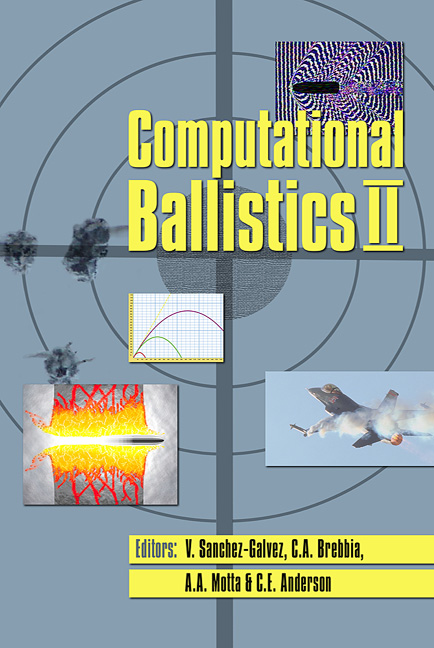Computational Support Of The Development Of A Mortar Simulator With Re-usable Shells
Price
Free (open access)
Transaction
Volume
40
Pages
9
Published
2005
Size
520 kb
Paper DOI
10.2495/CBAL050361
Copyright
WIT Press
Author(s)
A. Fedaravicius, M. Ragulskis & Z. Klimavicius
Abstract
Computational support of the development of mortar training systems is discussed in this paper. The shell-in-shell system used in the simulator raised a number of non-standard technical and computational problems starting from the requirement to distribute the propelling blast energy between the warhead and the ballistic barrel, finishing with the requirement that the length of the warhead’s flight path must be scaled to combat shell firing tables. Computational optimisation of the system parameters comprising external and internal ballistics problems was an integral part of the project. Keywords: simulator, mortar, internal ballistics, external ballistics, blast energy. 1 Introduction Development of military training equipment is an important factor minimising costs and maximizing training effectiveness [1, 2, 3]. The goal of the project was to develop mortar simulators with re-usable shells mimicking the combat shooting process. Mortar simulators must be applicable in field training of early career soldiers as well as in different combat training scenarios. Double-mass shell system is exploited. It comprises ballistic barrel and warhead. The relatively heavy ballistic barrel must be ejected from the barrel of the mortar after the blast. Its flight distance must be only few meters, − so that the operators could quickly collect the re-usable external shells. The flight distances of the warhead must be 10 times shorter than of the combat shells (data from combat firing tables). Moreover, only one propelling charge in the warhead is allowed – the blast energy must be distributed between the ballistic barrel and the warhead
Keywords
simulator, mortar, internal ballistics, external ballistics, blastenergy.




